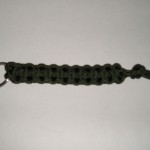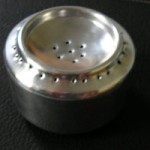Posts tagged camping
DIY Book Review: American Boys Handy Book
0Do you own a copy of The American Boy’s Handy Book? If not, I’d recommend putting it on your wish list.
Here’s a classic DIY guide geared towards projects children (with adult supervision) to teens and adults can all enjoy. If you’ve never heard of the American Boy’s Handy Book, you should definately check it out. The book includes a wide range of DIY projects, most of which are far more sophisticated DIY projects than you’d find in a Cub Scout guidebook. The projects in the book range from the fantasy (Mark Twain raft) to the questionable (DIY fireworks, various projectile devices, etc.) to the totally awesome (DIY boat building, wind skates, and so much more!).
A must for the ‘do it yourself’ person in your life.
Rating: 4.8/5.0
How to Make a Paracord Monkey Fist Knot Key Chain
0Just came across this great how to video on YouTube showing how to make a DIY Monkey Fist Knot Keychain. If you have some paracord or 550 cord leftover from your last projects, why not give this knot a try yourself. A monkey fist knot looks complex and is sure to attract attention. Try using a marble for the core as an alternative to the ball bearing shown.
Make a 550 Paracord Lanyard or Bracelet
0 Got some extra parachute cord (aka 550 cord or paracord)? Here’s a project that is both functional, attractive, and handy. Making a paracord lanyard or bracelet is a convenient way to carry a length of 10 feet or so of parachute cord for emergency or survival use.
Got some extra parachute cord (aka 550 cord or paracord)? Here’s a project that is both functional, attractive, and handy. Making a paracord lanyard or bracelet is a convenient way to carry a length of 10 feet or so of parachute cord for emergency or survival use.
Following a few simple knot tying methods, you can easily create a bracelet or lanyard out of 550 cord for camping, survival preparedness and as an attractive key fob.
Why Paracord? Used in parachutes for the military, this tough string has a tensile breaking strength of 550 lbs! Furthermore, it is composed of 5 or 7 inner strands that are very strong on their own and well suited to making a make-shift fishing line in an emergency or survival situation. It is also made of nylon so it is lightweight and resists mold and mildew.
Where to get parachute cord? Online or military surplus outlets. Note that there is alot of knock-off paracord available, that may serve fine for a bracelet, but might not have stength needed for camping or survival use. So be sure to check for a military rating if you intend to have it on hand for emergencies.
There are several styles of braid that you can use, but I used the method described here: http://www.theprepared.com/index.php?option=com_content&task=view&id=80&Itemid=49
Soda Can Backpack Stove
1 Here’s a neat little project I just stumbled upon. For those DIYers, this is a useful project if you like backpacking or camping. Constructed from pieces of aluminum soda cans, this versatile camp stove burns alcohol to produce its heat and resuses materials that would otherwise be discarded or recycled.
Here’s a neat little project I just stumbled upon. For those DIYers, this is a useful project if you like backpacking or camping. Constructed from pieces of aluminum soda cans, this versatile camp stove burns alcohol to produce its heat and resuses materials that would otherwise be discarded or recycled.
For my first attempt I carved up a couple of Coke cans paying little attention to making clean cuts and exact measurements and the initial set up was less than successful. However, with a little care, particularly to making clean cuts by peeling the can along scored marks, the second iteration was far more successful and more rigid.
For complete instructions on making your own handy alcohol stove from soda cans, consult: http://zenstoves.net/Stoves.htm. The author discusses various construction practices and fuels used, as well as safety hazards of each design.
The model I constructed (above) is known as a pressurized jet alcohol stove, which uses a metal insert to preheat and vaporize the fuel, pushing it out through the top jets. Open burners and pressure-regulated burners can also be similarly constructed with soda cans, tuna cans, or Altoids tins.